<Adventures in the Clouds: A Mountain Biking Tale>
Written on
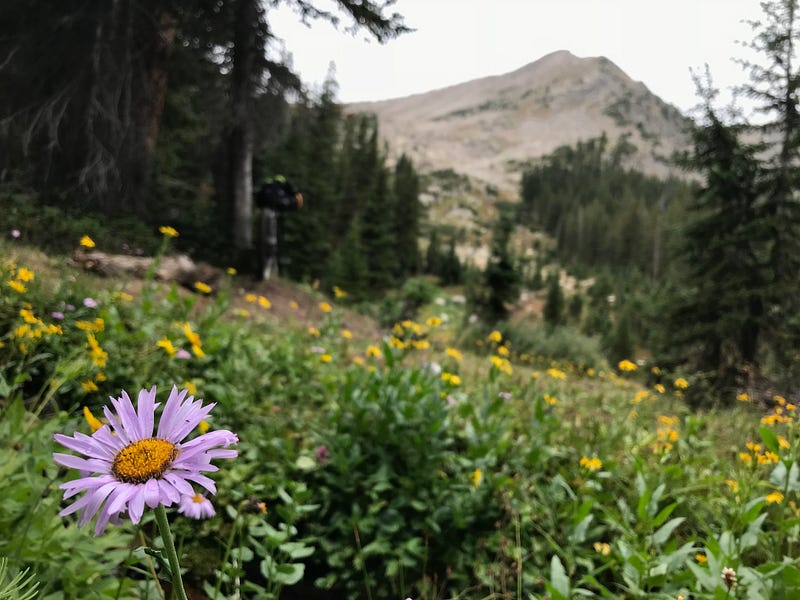
As I ascend beyond the treeline, the rain descends with increasing ferocity. The drizzle, though light, feels unyielding as I navigate the muddy, rocky terrain. My supposedly "water-resistant" jacket and pants fail to keep me dry, and I begin to feel the chill in the thin, brisk air, pushing myself harder up the slope to maintain warmth. Dark clouds gather around me as I climb higher.
Entering the tundra zone, I find stones scattered across the landscape, with small clusters of spruce and willows dotting the trail. The breathtaking panoramas of Buffalo Mountain and Dillon Reservoir to the north, Quandary Peak to the south, and the town of Breckenridge along with Bald Mountain to the east are all shrouded in a thick blanket of gray clouds.
Time slips away as I rise above the clouds, isolated on the mountain. The summits surrounding me are formed from metasedimentary rock, and the ancient two-billion-year-old stones, covered in slick lichen, become treacherous in the rain. Each step is a struggle, as I haul my bike upward, gasping for breath with every laborious movement. I navigate the switchbacks through steep, rocky terrain until I finally reach the pinnacle of the Tenmile Range.
"This is the first time the trail is above tree line for several miles," my guidebook states, promising magnificent views for those who reach the tundra. Yet beyond the few yards of tundra I stand on, all I see is an impenetrable wall of silvery mist.
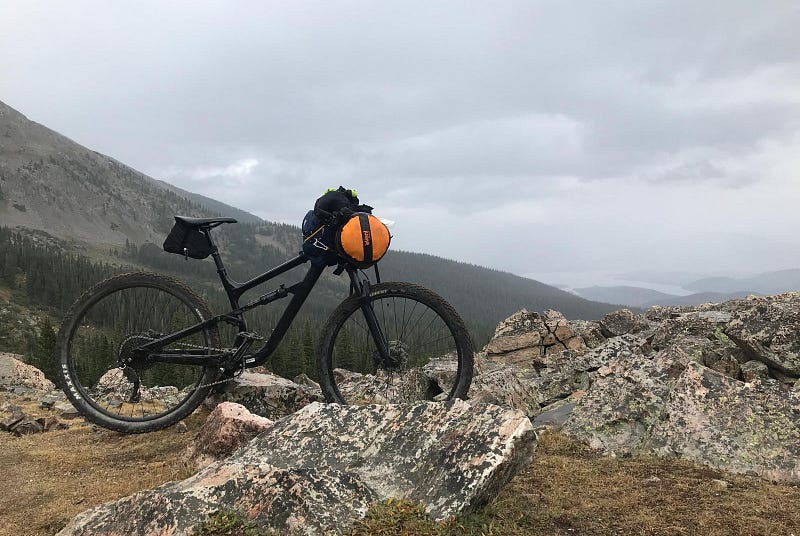
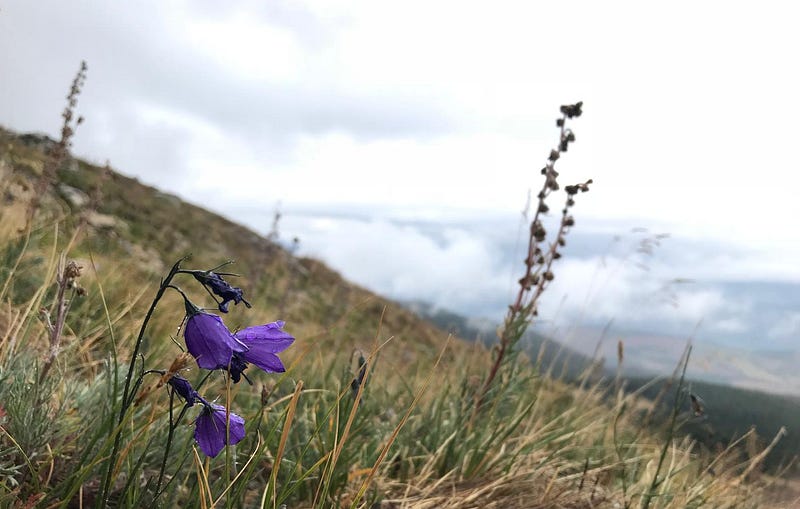
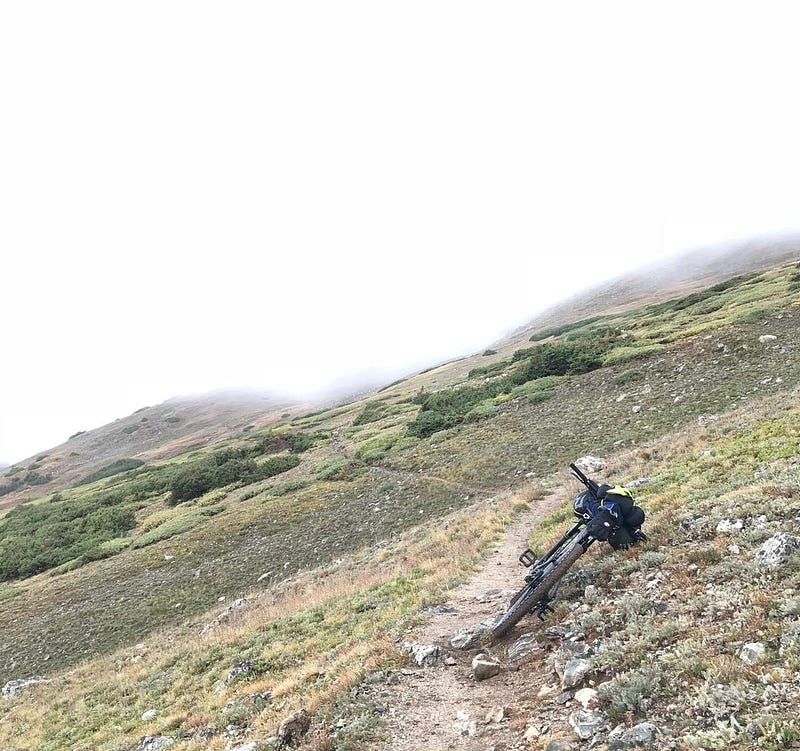
As I ride along the crest of the Tenmile Range, perched nearly 12,000 feet above sea level, a shocking thought jolts my mind—what if a thunderstorm hits and I become a target for lightning? "Summer thunderstorms can arrive swiftly," my guidebook cautions, and I find myself riding an aluminum frame that could easily attract a lightning strike.
In Colorado, approximately 500,000 lightning bolts strike the ground each year, with an average of twelve unfortunate souls becoming victims of this natural phenomenon. Between 1959 and 2017, Colorado recorded 148 lightning-related fatalities and numerous injuries.
While some may argue that the odds of being struck by lightning are lower than crashing a car or choking on gummy worms, it's evident that riding a metal bike at high altitudes during a thunderstorm considerably raises those odds. Such thoughts fuel my speed as distant thunder rumbles ominously in the background.
Descending the rocky western slope of the Tenmile Range, the trail becomes steep and technical. As I navigate the rocks with increasing urgency, I lose control of my bike. My brakes squeal under the weight of rain and debris. The rubber tires slip over the boulders, slick with bright orange fire lichen. Spotting a path to regain control, I notice two backpackers watching from a distance, their expressions wide-eyed.
In a moment of panic, I veer off the trail, fighting to keep my balance. There's a certain rhythm to downhill mountain biking—an effortless flow that some might describe as <i>Wu-wei</i>. I strive to find the path of least resistance, letting my body adapt to the terrain. My shocks absorb the bumps as I bend my knees and elbows, feeling the earth rise and fall beneath me. After a wild ride, I finally find my balance and glide down a smooth stretch of muddy singletrack.
The backpackers step aside as I approach. One calls out, "Well done, man!" while the other adds, "Good job! Stay safe out there!"
I nod at the hikers, grateful for their encouragement. "Good call," I reply, acknowledging the risks. I've had my fair share of falls, including a dislocated shoulder on Wheeler Trail just a few years back. This injury was typical of mountain biking accidents, as noted in a 2002 <i>Sports Medicine</i> study.
"Most serious mountain biking injuries occur due to rapid deceleration, causing the rider to be thrown over the handlebars, particularly when descending," the study explains. "Direct trauma to the head, shoulder, torso, and upper body can result from this mechanism."
Recalling the painful memory of being thrown from my bike, I slow down, choosing my lines carefully as I navigate the trail. The mud shifts under my tires as I descend through a dark, damp forest. Eventually, I reach the banks of Tenmile Creek, about two thousand feet below the summit, where ominous clouds loom overhead.
I search for a suitable spot to set up camp and find a bed of pine needles beneath a large conifer. I pitch my tent quickly, eager to escape the cold and dampness. Inside, I arrange my sleeping bag, pad, books, headlamp, and dry clothes, finally curling up in the cozy confines of the tent.
As I change into my camp clothes, I try to retain my body heat in my sleeping bag. The rain has ceased, but the temperature has dropped significantly, leaving me shivering and worried about hypothermia.
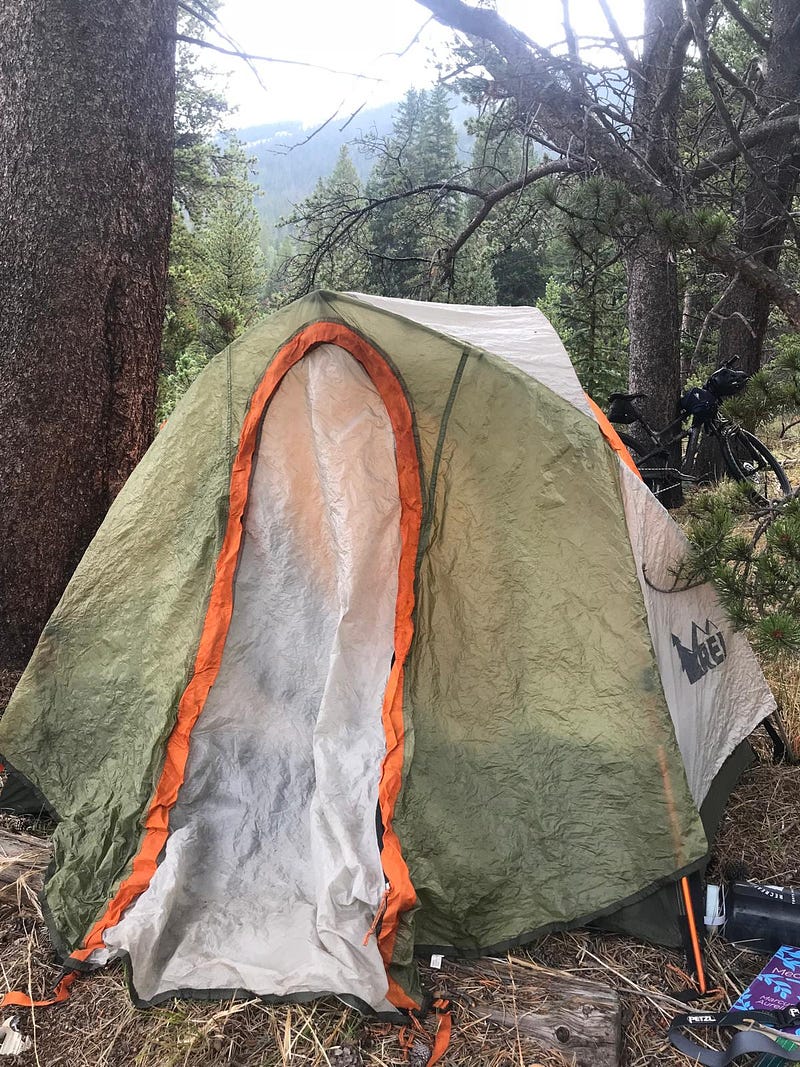
While considering the dangers of the wilderness, I often think of bears, mountain lions, rattlesnakes, and lightning strikes, but hypothermia is a silent but deadly threat in the mountains.
Hypothermia is the leading cause of death for those lost in the wilderness. "Historically, human exposure to cold was linked to occupational hazards," a team of scientists noted in their study on "accidental hypothermia." It seems almost redundant—who intentionally seeks to suffer from hypothermia?
The study further states that accidental hypothermia has increasingly become a concern for recreational activities. From 1999 to 2011, nearly 17,000 lives were lost to hypothermia in the U.S., with a significant number occurring during mountain recreation.
Engaging in outdoor activities like hiking, biking, and climbing can be physically taxing. "When traversing the mountains, participants typically operate at 30–55% of their maximal oxygen uptake, depending on the terrain," a study published in the <i>British Medical Journal</i> reveals. "At these exertion levels, the body's heat production usually offsets heat loss."
However, after intense exercise, as I find myself in my tent, the cold starts to creep in. Getting drenched in mountain rain only exacerbates the situation.
Hypothermia sets in when the core body temperature drops below 95 degrees Fahrenheit. Essentially, the body loses heat faster than it can produce it. In response, blood vessels constrict to conserve warmth, and muscles contract and shiver to generate heat, increasing blood flow throughout the body.
This process requires substantial metabolic energy, and the body can only sustain it for so long. Eventually, fatigue sets in, posing severe risks in extreme cases.
"The best way to counteract hypothermia is to maintain body heat through exercise," states the <i>BMJ</i> study.
So, shivering in my tent beneath the Tenmile Range, I pass a miserable night doing push-ups, planks, and breathing exercises to raise my temperature. I contemplate starting a fire to dry my clothes, but with a statewide fire ban in effect, I abandon that idea, even as I teeter on the brink of hypothermia.
Cars hum along Interstate 70 nearby, their headlights flickering like shooting stars against the darkened landscape. As the night progresses, warmth gradually returns to my fingers and toes. My shivering eases, and I start to feel like myself again, cocooned in the comforting embrace of my tent.
Reading <i>Meditations</i> by Marcus Aurelius, I eventually drift into a semblance of sleep.
<b>Note:</b> This narrative is an excerpt from my book, <i>The Trail to Nowhere: Life and Death Along the Colorado Trail</i>, available for pre-order, set to publish on August 24, 2024—exactly four years after the journey that inspired it. If you wish to read the book before its release, claim a free copy here. Thank you for your support.